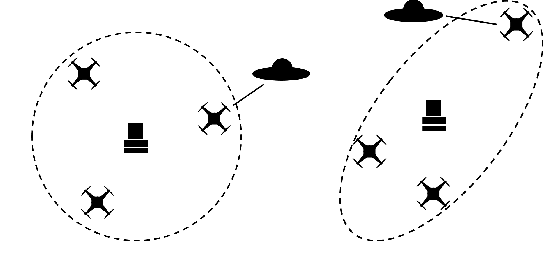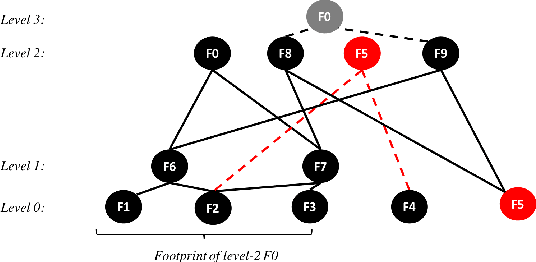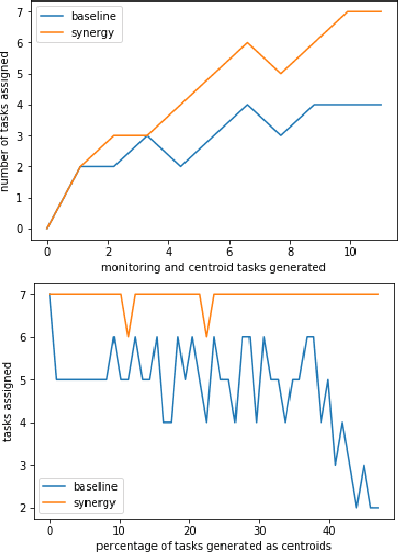Winston Smith
Assigning Multi-Robot Tasks to Multitasking Robots
Jun 18, 2025Abstract:One simplifying assumption in existing and well-performing task allocation methods is that the robots are single-tasking: each robot operates on a single task at any given time. While this assumption is harmless to make in some situations, it can be inefficient or even infeasible in others. In this paper, we consider assigning multi-robot tasks to multitasking robots. The key contribution is a novel task allocation framework that incorporates the consideration of physical constraints introduced by multitasking. This is in contrast to the existing work where such constraints are largely ignored. After formulating the problem, we propose a compilation to weighted MAX-SAT, which allows us to leverage existing solvers for a solution. A more efficient greedy heuristic is then introduced. For evaluation, we first compare our methods with a modern baseline that is efficient for single-tasking robots to validate the benefits of multitasking in synthetic domains. Then, using a site-clearing scenario in simulation, we further illustrate the complex task interaction considered by the multitasking robots in our approach to demonstrate its performance. Finally, we demonstrate a physical experiment to show how multitasking enabled by our approach can benefit task efficiency in a realistic setting.
Achieving Multi-Tasking Robots in Multi-Robot Tasks
Jul 01, 2020



Abstract:One simplifying assumption made in distributed robot systems is that the robots are single-tasking: each robot operates on a single task at any time. While such a sanguine assumption is innocent to make in situations with sufficient resources so that the robots can operate independently, it becomes impractical when they must share their capabilities. In this paper, we consider multi-tasking robots with multi-robot tasks. Given a set of tasks, each achievable by a coalition of robots, our approach allows the coalitions to overlap and task synergies to be exploited by reasoning about the physical constraints that can be synergistically satisfied for achieving the tasks. The key contribution of this work is a general and flexible framework to achieve this ability for multi-robot systems in resource-constrained situations to extend their capabilities. The proposed approach is built on the information invariant theory, which specifies the interactions between information requirements. In our work, we map physical constraints to information requirements, thereby allowing task synergies to be identified via the information invariant framework. We show that our algorithm is sound and complete under a problem setting with multi-tasking robots. Simulation results show its effectiveness under resource-constrained situations and in handling challenging situations in a multi-UAV simulator.
 Add to Chrome
Add to Chrome Add to Firefox
Add to Firefox Add to Edge
Add to Edge